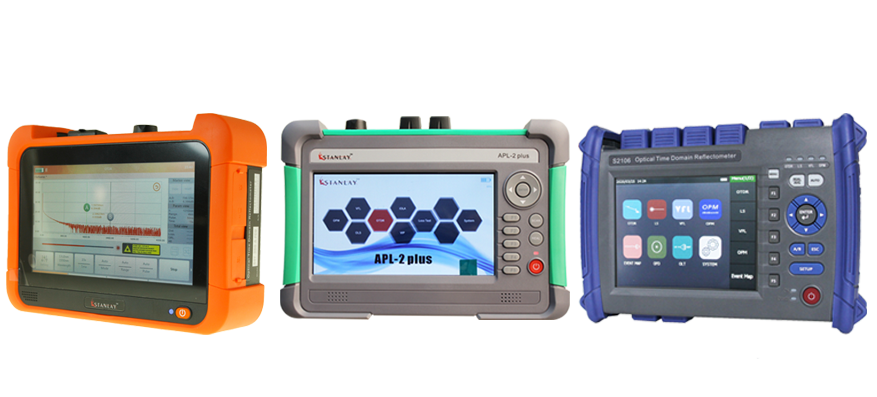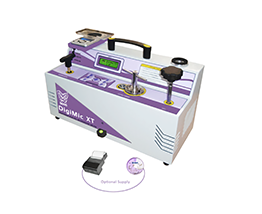Comprehending How an Optical Measurement System Boosts Precision in Industrial Applications
Optical measurement systems play an important function in boosting accuracy throughout various commercial applications. By leveraging advanced innovations such as laser interferometry and 3D imaging sensors, these systems use high-resolution, non-contact dimensions. This capability decreases the threat of damaging delicate parts while guaranteeing precision. The effect of these systems extends past plain measurements. Discovering their advantages, applications, and future patterns exposes a complex landscape of development and obstacles that benefits closer examination.
The Fundamentals of Optical Measurement Systems
Optical measurement systems work as necessary tools in various industrial applications, giving accurate information collection and evaluation. These systems use light as a key means of measurement, leveraging optical concepts to evaluate measurements, positions, and surface area qualities of items. They include parts such as lasers, electronic cameras, and sensing units, which interact to record high-resolution pictures and information.
The innovation makes it possible for non-contact dimensions, reducing the risk of damaging sensitive parts. Optical measurement systems are versatile, locating utility in top quality control, setting up verification, and dimensional evaluation throughout different sectors. They are particularly efficient in atmospheres where typical measurement techniques may fail, such as determining intricate geometries or observing fast motions.
As industries proceed to evolve, the assimilation of optical measurement systems will remain important for guaranteeing precision and effectiveness, inevitably boosting item top quality and operational performance in numerous making procedures.
Secret Technologies Behind Optical Measurement
Key innovations such as laser interferometry strategies and 3D imaging sensors play an essential role in the effectiveness of optical measurement systems (robotic vision). These modern technologies make it possible for exact measurements and thorough analysis in various industrial applications. Comprehending their capabilities is important for utilizing the complete potential of optical measurement systems
Laser Interferometry Techniques
Various laser interferometry strategies have reinvented the area of optical measurement, offering unmatched accuracy and accuracy in numerous industrial applications. These strategies make use of the interference of systematic light waves to determine distance, variation, and surface area irregularities with nanometer-level accuracy. Usual methods consist of Michelson interferometry, which divides a beam and evaluates phase shifts, and Fabry-Pérot interferometry, recognized for its high resolution in gauging small modifications. In addition, laser Doppler interferometry employs regularity shifts to evaluate velocity, making it invaluable in vibrant dimensions. The flexibility of these methods enables their integration into diverse production processes, boosting quality assurance and making sure adherence to rigid resistances. As an outcome, laser interferometry proceeds to play a vital duty beforehand industrial measurement standards.
3D Imaging Sensors
Improvements in measurement innovation have actually caused the growth of 3D imaging sensing units, which play a substantial role in optical measurement systems. These sensing units capture three-dimensional data via various techniques such as triangulation, time-of-flight, and organized light. By precisely rebuilding the shape and measurements of things, 3D imaging sensing units enhance the precision of dimensions in commercial applications. They provide real-time responses, assisting in high quality control and making sure that components meet rigorous requirements. Furthermore, their capability to run in difficult settings, such as varying illumination problems, makes them indispensable in making processes. As markets progressively adopt automation, the integration of 3D imaging sensors into optical measurement systems is expected to drive additional enhancements in performance and precision.
Advantages of Optical Measurement in Sector
Standard measurement methods have long been the criterion in industrial settings, optical measurement systems provide substantial advantages that enhance precision and efficiency. These systems make use of light to record data, leading to high-resolution dimensions that are frequently unattainable with traditional techniques. The non-contact nature of optical dimensions decreases the danger of damaging sensitive elements throughout the analysis process. In addition, the speed of optical measurements enables for fast information procurement, promoting prompt decision-making in fast-paced industrial atmospheres.
Optical systems are adaptable, with the ability of measuring different products and forms without the need for extensive recalibration. This versatility adds to enhanced operations and performance. The automation capacity of optical measurement systems reduces human error, ensuring consistent quality control. On the whole, the assimilation of optical measurement modern technology stands for a dynamic shift towards enhanced accuracy and integrity in industrial procedures, ultimately resulting in boosted product quality and operational performance.
Applications of Optical Measurement Systems

Optical measurement systems play a critical duty in boosting manufacturing process optimization by offering specific data for decision-making. These systems ensure high quality control guarantee with real-time monitoring and analysis of production metrics. As markets increasingly take on these modern technologies, their effect on performance and item dependability becomes obvious.
Manufacturing Process Optimization
Enhancing production procedure effectiveness is increasingly reliant on the assimilation of optical measurement systems. These systems supply real-time data on various specifications, allowing suppliers to examine processes with a high level of precision. By enabling specific dimensions of measurements, surface area attributes, and product properties, optical measurement systems help with the identification of ineffectiveness and bottlenecks in assembly line. The image source instant feedback from these systems equips designers to make educated choices, bring about optimized machining, setting up, and ending up processes. The capability to check conditions continually enables for adaptive modifications, decreasing downtime and waste. As sectors go for better productivity and decreased functional prices, optical measurement systems become vital devices for boosting production process optimization.

Quality Control Guarantee
The integration of optical measurement systems substantially impacts top quality control guarantee in industrial setups. These systems supply exact and non-destructive measurements, making it possible for manufacturers to identify flaws and inconsistencies early in the production procedure. By utilizing innovative imaging strategies, such as laser triangulation and interferometry, optical measurement systems assure that parts satisfy strict specs. This promotes real-time tracking, decreasing waste and lessening the risk of malfunctioning products reaching the market. Additionally, the information gathered can be evaluated to improve manufacturing processes additionally, causing constant renovation. Inevitably, the fostering of optical measurement systems enhances reliability and consistency in quality control, promoting higher confidence amongst stakeholders and customers alike in the final items delivered.
Instance Researches: Successful Implementations
Numerous markets have actually successfully integrated optical measurement systems to boost their functional performance and product quality. In the vehicle market, a prominent maker embraced a laser triangulation system to monitor the alignment of vehicle elements. This implementation significantly decreased assembly errors, causing improved safety and check it out lowered expenses.
In the aerospace sector, a leading airplane producer used optical width for accuracy dimensions of wind turbine blades, achieving a decrease in producing resistances and better performance standards.
A consumer electronic devices company implemented optical measurement innovation throughout the production of smartphone displays, resulting in boosted quality control and a decrease in malfunctioning products.
These study highlight how optical measurement systems not just enhance accuracy however also add to total operational performance, demonstrating their worth across different markets. By resolving particular demands, these systems have actually proven to be vital devices in modern-day industrial applications.
Difficulties and Limitations of Optical Measurement
While optical measurement systems supply substantial advantages in different industrial applications, they are not without their challenges and restrictions. One major problem is level of sensitivity to environmental conditions, such as temperature changes, moisture, and dirt, which can adversely affect measurement accuracy. In addition, optical systems commonly need accurate placement and calibration, making them susceptible to human error throughout setup and operation. One more restriction is the potential for disturbance from ambient light, which can distort measurements and necessitate complicated filtering strategies. Furthermore, specific products and surface areas may present troubles, as reflective or transparent characteristics can bring about irregular analyses. The expense of high-grade optical elements and systems can additionally be a barrier for some markets, restricting widespread fostering. Specialized training is frequently needed for personnel to successfully run and preserve these systems, adding to the overall intricacy and functional obstacles.
Future Trends in Optical Measurement Modern Technology
As advancements in innovation continue to shape industrial processes, the future of optical measurement systems is poised for significant advancement. Arising fads indicate a shift in the direction of enhanced combination of expert system and artificial intelligence, enabling systems to evaluate information in real-time, determine patterns, and improve decision-making processes. In enhancement, the advancement of miniaturized sensing units and advanced optics is expected to bring about more compact and functional measurement services, making them accessible for a larger variety of applications.
Furthermore, the unification of 3D imaging and high-resolution abilities will permit for unprecedented accuracy in dimensions, which is necessary for markets such as aerospace and vehicle. The promote automation and Market 4.0 will likewise drive the need for optical measurement systems that can quickly user interface with other innovations. As these fads unfold, optical measurement systems will likely end up being integral to achieving better performance and precision across numerous commercial industries.

Frequently Asked Inquiries
How Do Optical Measurement Systems Contrast to Typical Measurement Methods?
Optical measurement systems offer greater precision and speed contrasted to standard approaches - optical fibre diameter analyser. They reduce human error, enhance information collection efficiency, and provide real-time outcomes, making them significantly preferred in numerous commercial applications for specific measurements
What Industries Benefit the A Lot Of From Optical Measurement Systems?
Optical measurement systems significantly profit markets visit this web-site such as aerospace, automobile, and electronic devices. Their ability to provide high-precision measurements boosts quality assurance, lowers production errors, and enhances overall performance, making them vital in competitive production settings.
Can Optical Measurement Systems Be Personalized for Particular Applications?
Optical measurement systems can undoubtedly be tailored for details applications. By readjusting criteria such as wavelength, resolution, and calibration methods, sectors can tailor these systems to satisfy one-of-a-kind precision and accuracy requirements efficiently.
What Is the Upkeep Demand for Optical Measurement Systems?
The maintenance needs for optical measurement systems commonly include routine calibration, cleansing of optical parts, and software updates. Sticking to these methods guarantees precision, reliability, and long life of the measurement devices in numerous applications.
How Do Ecological Elements Impact Optical Measurement Precision?
Environmental factors, such as temperature level fluctuations, humidity, and dirt, considerably effect optical measurement accuracy. These components can distort light paths and interfere with sensing unit readings, inevitably jeopardizing the integrity and accuracy of dimensions in industrial settings.